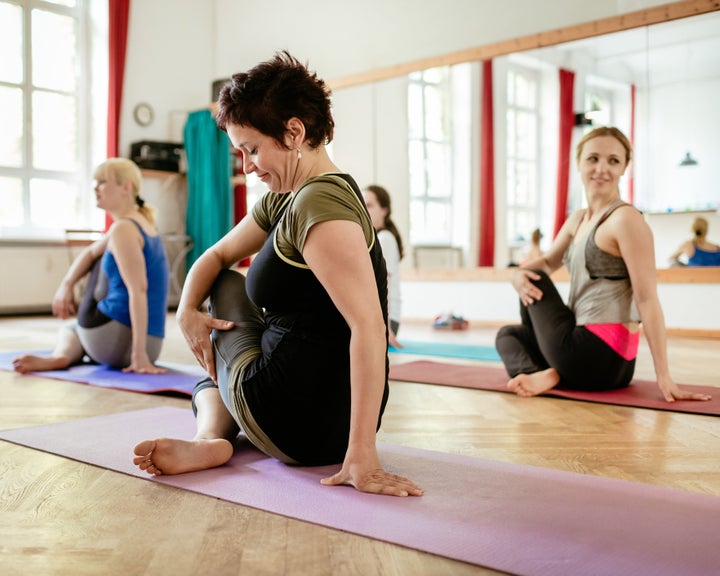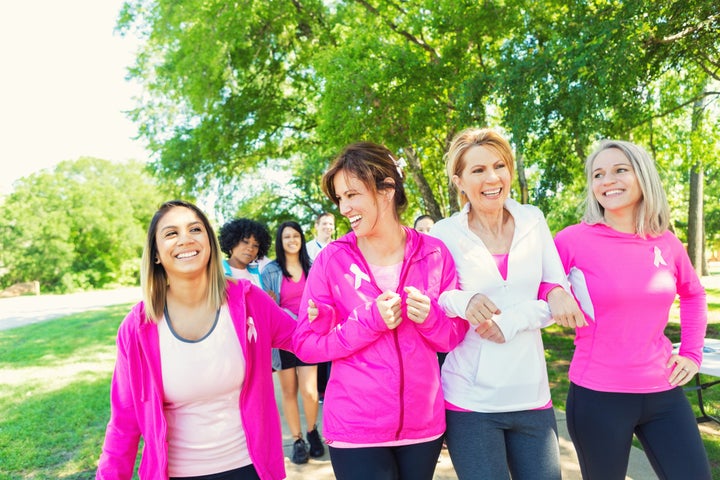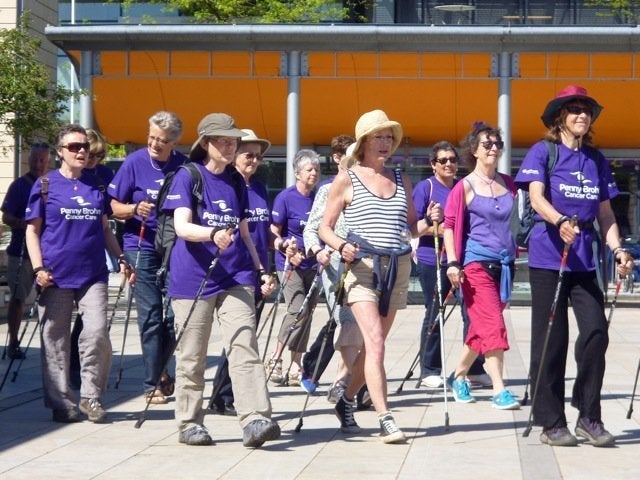Undergoing treatment for breast cancer can be both physically and emotionally draining, so understandably, exercise may be the last thing on your mind.
But reclaiming your fitness regime, or starting an entirely new one, can be an empowering step towards recovery.
“Physical activity helps to manage the consequences of treatment such as fatigue, depression and heart damage,” Jo Foster, physical activity programme lead at Macmillan Cancer Support tells The Huffington Post UK.
“It can also prevent and manage other long-term conditions and reduce the risk of cancer spreading, coming back and causing death for some types.
“Most importantly, many people find that being physically active helps them get their lives back. It is something they can do to help themselves no matter how old someone is or what stage they are in their cancer journey.”

According to Foster, the “right amount” of physical activity for someone during or after breast cancer treatment varies from person to person.
“There are many factors to consider, including whether they were active and, if so, how active, before their diagnosis; at what stage of their cancer journey they are; any other long-term conditions they may have and whether they are experiencing any side effects from their treatment,” she says.
“For example, if someone is struggling with fatigue, they might not feel like doing any exercise. But a gentle level of physical activity, like walking to the local shop, can bring great benefits and help break what we call the ‘vicious cycle’ of fatigue.
“If someone has suffered from muscle-wasting as a result of treatment, then an activity which encourages strength-building, such as using weights, could be suitable and beneficial for them.”
Almost every type of exercise is beneficial - from yoga to running - and the most important thing is to go at your own pace during and after treatment and find something you enjoy.
If you’ve had chemotherapy treatment, your cancer doctor may recommend you avoid public spaces, such as swimming pools and gyms, for a while.
Chemotherapy lowers the number of white blood cells in your blood, which in turn increases your risk of getting an infection. Once your doctor has told you your white blood cells are back to a normal level, swimming can be enjoyed as usual.

Amy, 32, was diagnosed with breast cancer in May 2014. Before her diagnosis she enjoyed regular exercise and says getting back into a routine helped her regain her sense of self.
“I was really active before treatment. You’ve gone from being fit and healthy, running and cycling for hours, and then suddenly you’re exhausted from just a short walk and your bones are aching,” she says.
“It’s a confusing time, you feel like your body’s gone backwards – well, forwards really because you feel so old. It’s a bit of a shock.”
Amy was diagnosed with cancer after feeling a lump in her breast, which she originally mistook as an exercise injury.
“I was doing BodyPump [exercise class] and I thought it was a weird muscle under my boob that had popped or something,” she says.
“When I was diagnosed, I couldn’t really take it all in, they were saying I’d have to have loads of tests and scans and I just kept repeating ‘I knew it was, I knew it was.’”
She says after receiving treatment, it was difficult to get back into exercise at first, but thanks to support from Macmillan she soon found her feet.
“I didn’t know what my physical limits were anymore, everything feels alien, the implant feels weird, you can feel your skin kind of move around it, you’re a bit worried ‘cause you’re not sure what’s normal,” she says.
“But exercise makes you feel better about yourself – you know you’re improving your body, and you’re even more health conscious when you’re ill.”
Macmillan’s ‘Move More’ campaign aims to help people reclaim their fitness after a cancer diagnosis, through organised walks, a DVD of easy at-home exercises and information packs.
And they aren’t the only ones helping to make fitness more accessible to breast cancer patients and survivors.

More and more retailers, such as Marks and Spencer, are making post-surgery sports bras with prosthesis pockets so women can look and feel the part when getting back into fitness after mastectomies.
Meanwhile wellness centres such as Penny Brohn, in Bristol, offer exercise classes specifically tailored to those receiving or recovering from cancer treatment.
Penny Brohn offers a range of classes including:
Yoga - to increase strength, flexibility and balance while helping with high blood pressure, heart disease, aches, pains, depression and stress.
Nordic walking - a gentle walking completed with special poles to aid posture, improve circulation, tone the upper and lower body, burn calories and provide a social event.
Qi gong - a Chinese health practice of gentle movement, meditation and breathing to improve balance, reduce blood pressure and ease depression.
Catherine Zollman, Penny Bohn’s lead doctor, explains that any movement that uses energy counts as physical activity and those thinking about reintroducing exercise into their lives should start slowly.
“We suggest that people start gently, at a pace that suits them, monitor progress and, if up to it, slowly build up the amount, type and intensity. It’s about enjoying what you are doing and not pushing yourself too far,” she says.
“Any activity is better than none and remember to include rest periods. We always say exercise you enjoy and can sustain is better for you than exercise you don’t enjoy and don’t do. Physical activity in 10-minute blocks or more still gives the same benefits.
“People doing exercise they enjoy tend to experience the most benefits and are more likely to continue long term.”

She also recommends trying out a range of different exercises as each can hold different benefits.
“Some are good for cardiovascular fitness, some are better for improving fatigue and stamina,” she says.
“Some help regain muscle tone, strength and balance (commonly affected by some cancer treatment), some help with joint flexibility and reduce stiffness, which may be worsened by treatment.”
Dr Zollman advises contacting one of Penny Brohn’s GPs, or your own GP, to discuss the best type of exercise to suit your needs.
Someone who’s really benefited from the exercise programmes available at the centre is breast cancer survivor Jo Rogers.
Rogers has always loved exercise classes and played basketball 12 hours a week before her diagnosis, but after treatment found it “difficult to get back into”.
“I had heard that cancer cells die with oxygen and increase with sugar, so it was obvious to me that I needed to increase my exercise and focus on my diet to prevent a relapse,” she says.
“However chemotherapy meant that I lacked my usual energy to undertake vigorous exercise. I had never considered just walking as a form of exercise, but I found myself forced to take walks in the park and doing yoga to really give me the best feeling.”
Rogers expected to be out of action for a long time after surgery and was surprised when she got back into light exercise “relatively quickly”.
“It gave me more energy than I expended and I found that Penny Brohn were able to give me pointers to things - like nordic walking- that I could undertake that would not take too much effort, but would get my heart rate pumping,” she says.
“During chemo I did manage to do Bikram yoga and found that it reinvigorated me, but by the end of the treatment course I was too weak to attend too often.”
But since treatment, Rogers has well and truly got back to her former self and is out to prove other women can do the same.
“Since my treatment I managed to go to the Shaolin temple to train as a Shaolin monk, which required running a half marathon and getting to an increased level of fitness through Oi Gong, yoga and stretching,” she says.
“I think that I am now at my pre-cancer level of fitness and I intend to keep it up.”
